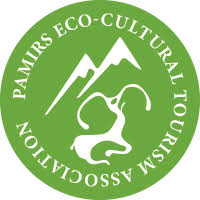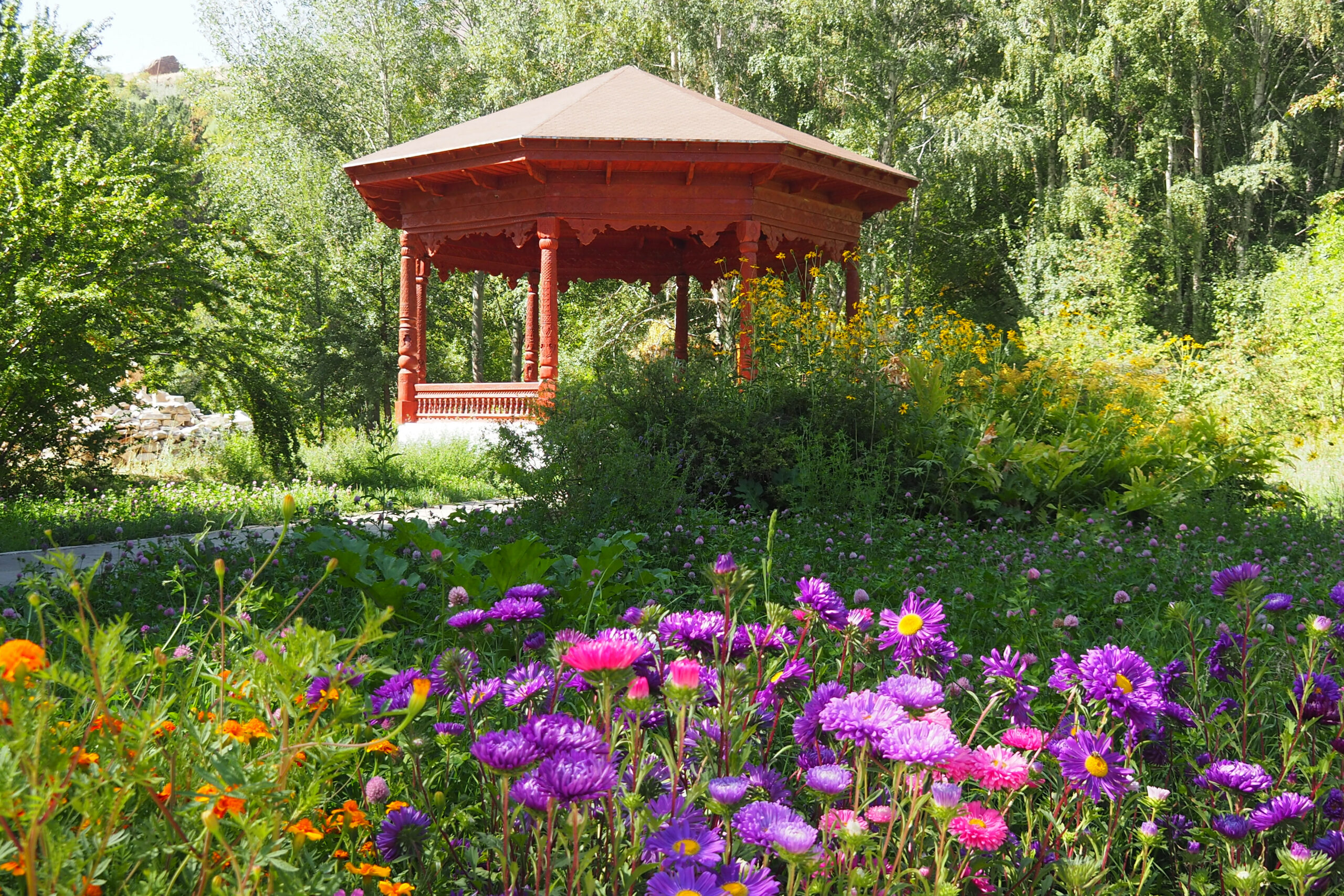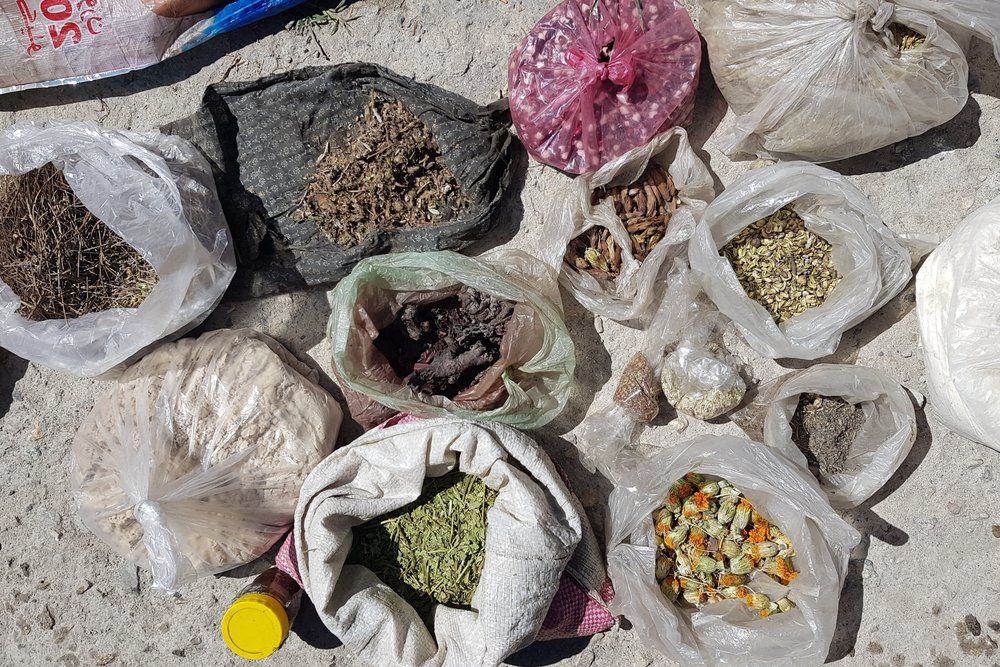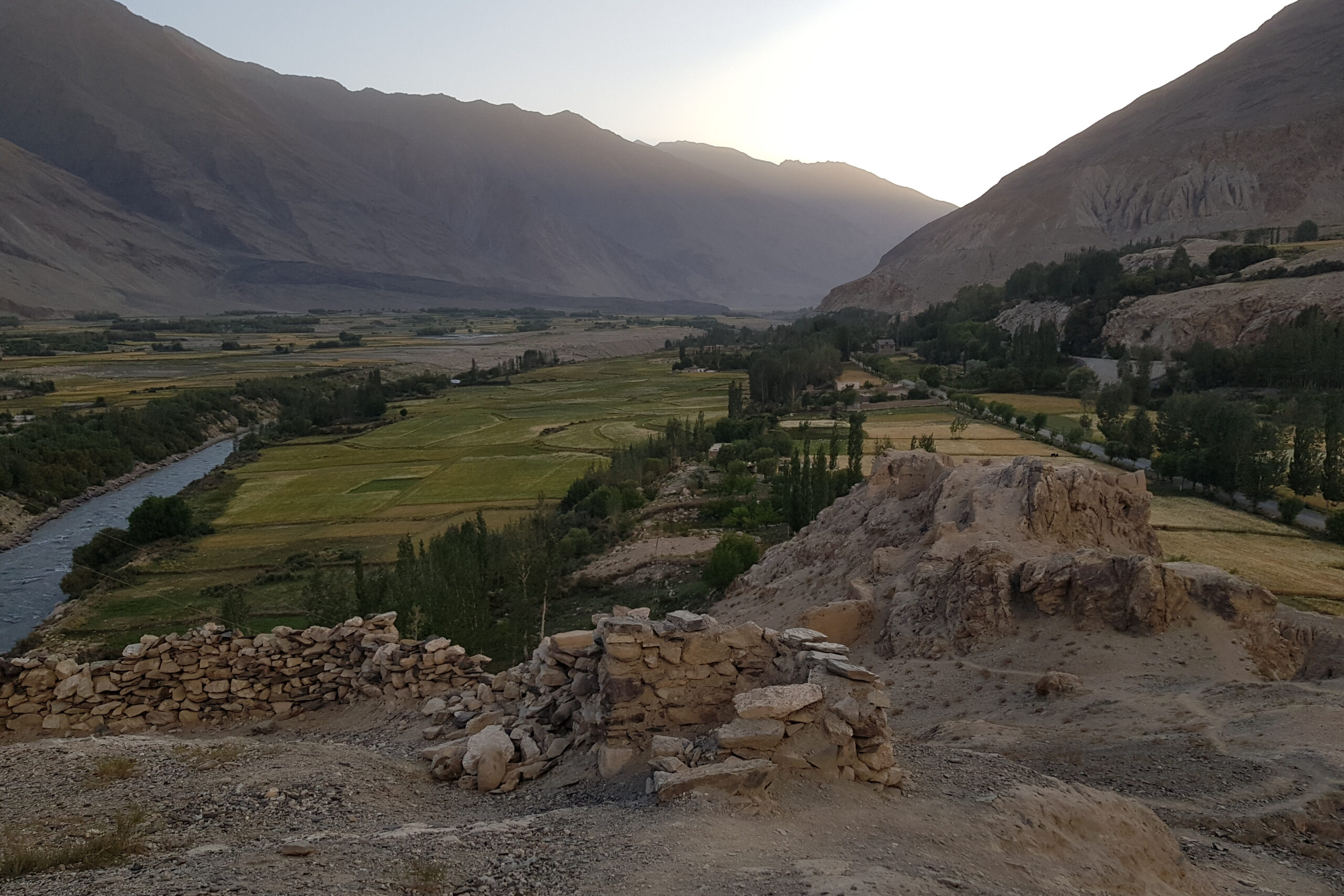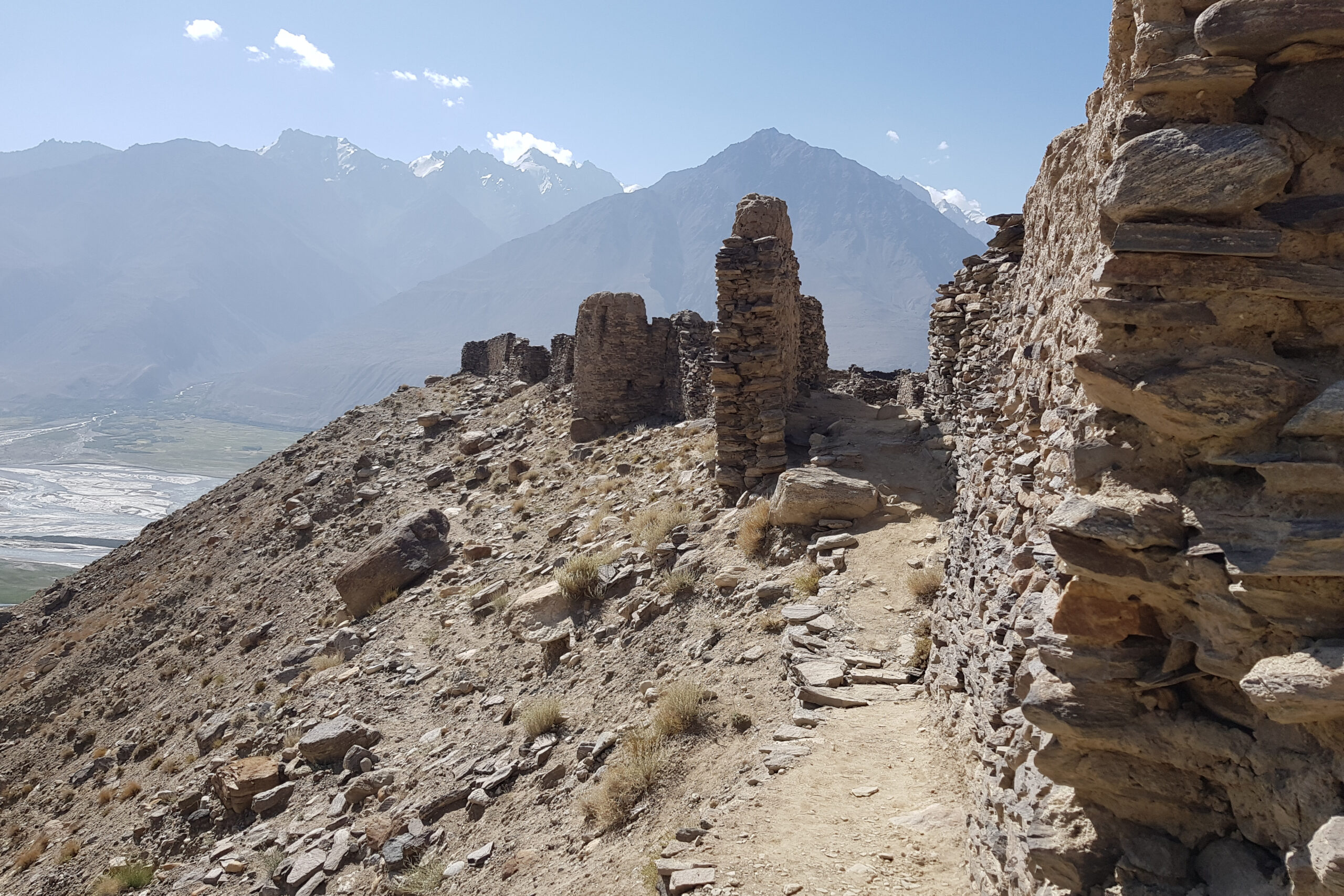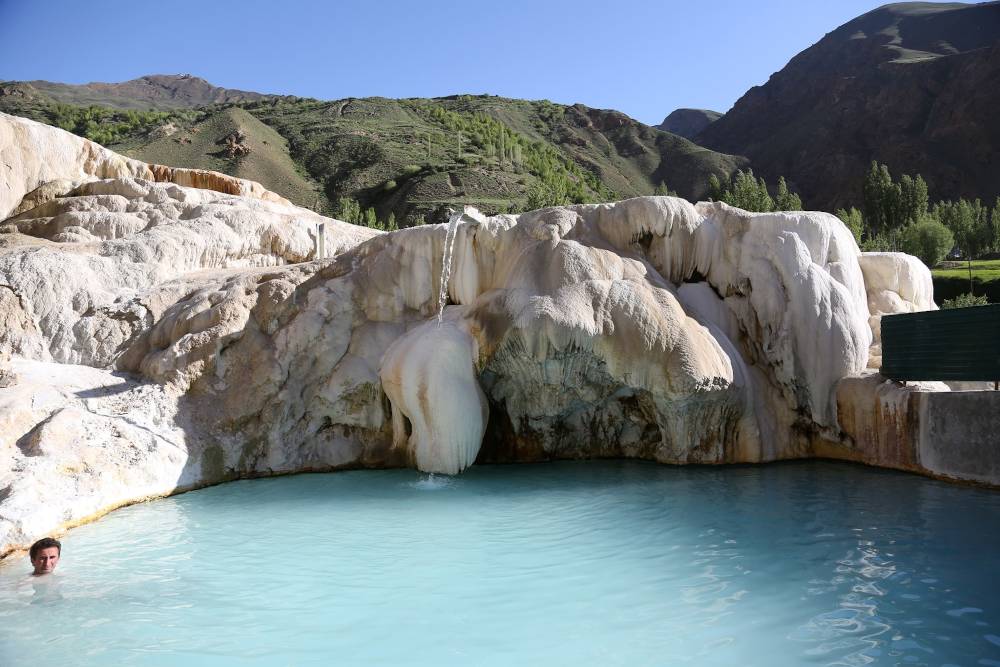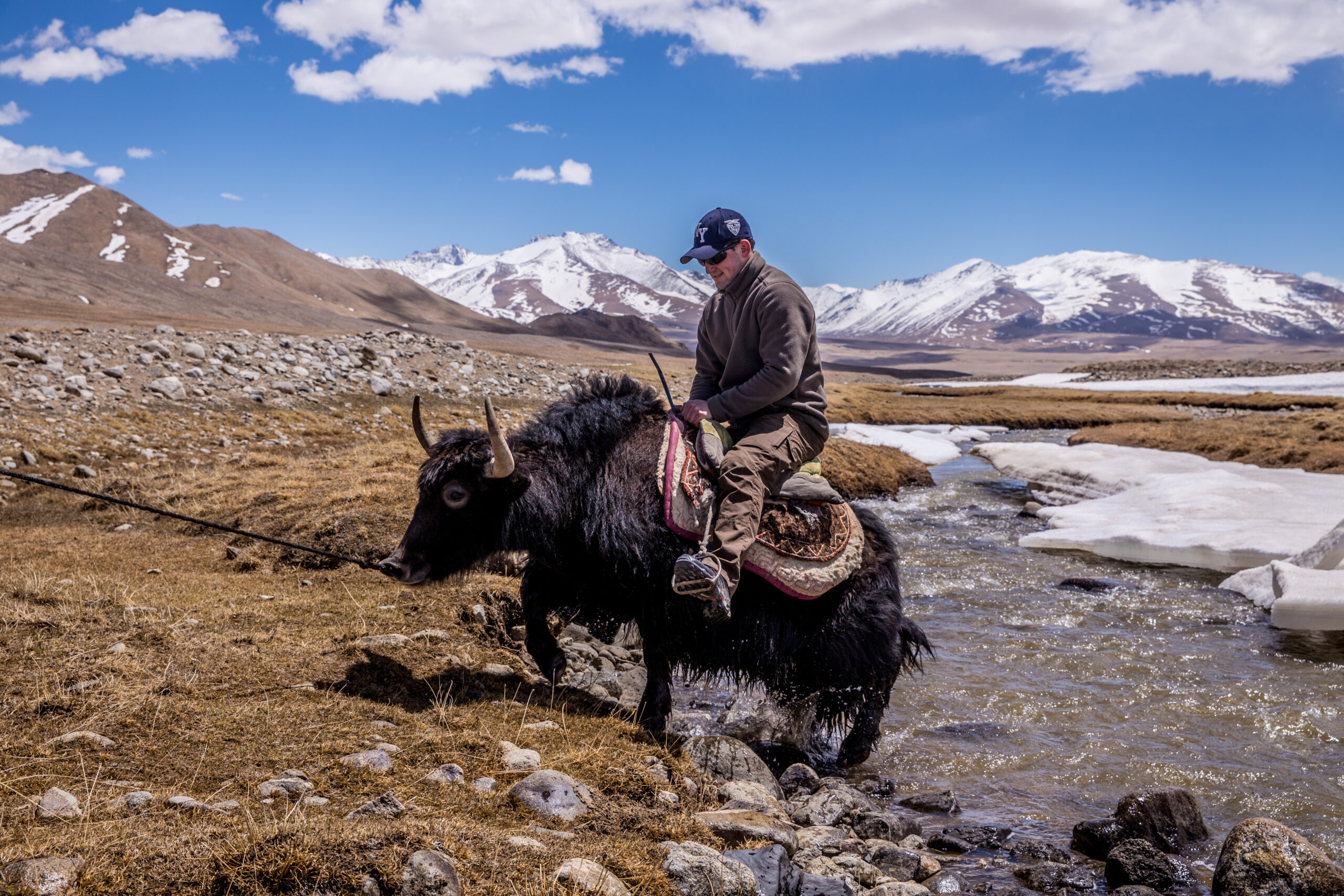Embark on a journey through long forgotten timesCulture & Heritage
Culture & Heritage
Embark on a journey through long forgotten times
The importance of Central Asia has changed greatly over the centuries. At the time of the Silk Road, Central Asia was economically and culturally significant. The legacy from that time is still visible today. Visit the ancient cities and sights. Till this day, the Pamirs are a place of diversity.
The importance of Central Asia has changed greatly over the centuries. At the time of the Silk Road, Central Asia was economically and culturally significant. The legacy from that time is still visible today. Visit the ancient cities and sights. Till this day, the Pamirs are a place of diversity.
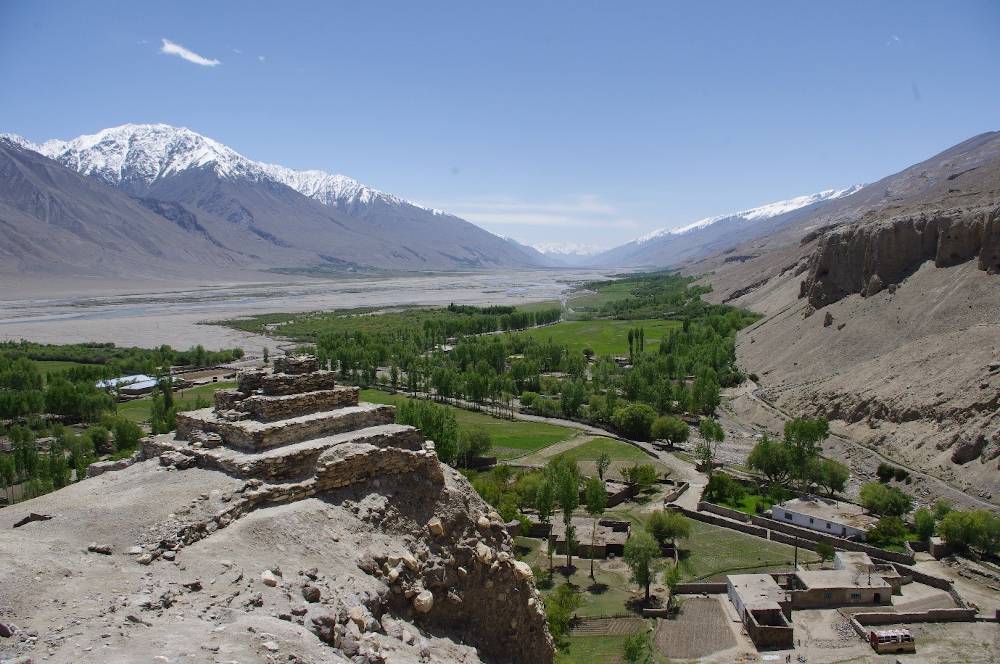
Ismaili Center & Jamarthkana
Ismaili Center & Jamatkhana is a community house for Ismaili Shias, who represent more than 95 % of the Pamiris. It has various areas, including social halls and a prayer room. It is possible to have a free-guided tour till 4 pm. Duration is 20-30 minutes. More information about the Ismailis and their Imam, the Aga Khan, can be found here.
Botanical Garden
Visit the second highest botanical garden (2300m) worldwide. You will find over 2300 different plant species. Stroll through the park, enjoy the fresh scent of the flowers and the beautiful view over Khorog.
Opening hours are from 8 am till 5 pm and the entrance fee is 15 Somoni.
Afghan – Tajik Bazar
Located in Qualai-Khumb, Chorugh, Ishkashim (Afghan side)
Visit the Afghan – Tajik bazaar. On the market you can find clothes, shoes, traditional medicine, cosmetics, food and all kinds of fabrics and sheets. The bazaar takes place every Saturday from 8 o’clock and goes into the afternoon. You can find the bazar in Rusvay, 5 km east of Kalai-Khumb (Darvaz district), in Khorog and 5 km before Ishkashim on the Afghan side (Ishkashim district).
Stupa in Vrang
Stupa in Vrang is an old Buddhist monastery from the 6-7th century. According to the legend, on the top of the monastery, there used to be a golden Buddha figure that was later stolen. The monastery rises 180 meters above the valley below. Explore some of the caves which were used by the monks! Located in Ishkashim district
Petroglyphs
Most petroglyphs are found near the village Langar, 120 km from Ishkashim. The drawings are from the time of the Langar settlement. There are over 600 drawings. They represent wild animals, hunting scenes, horsemen, portrayed rubabs and various graphic characters. The drawings are traced back to different periods until the appearance of Muslim religion in the region.
Kakh Kaha Foretress
The fortress Kakh-Kaha and its sanctuary is situated in Namadjut, Ishkashim district. It is situated on the bank of the river Panj, on the isolated rocky height, stretching out along the river 1 km east from the settlement of lower Namadgut. The length of the fortress from west to east is 675m and from south to north, it is 220m. It is protected by double layers of walls, fortified with 56 towers of round shapes with loopholes. The base of the fortress dates from the Zoroastrianism period in the second century BC. There is a small roadside stall about 100 metres behind the site. Tajik and Afghan handicrafts are sold there.
Yamchun Foretress
The fortress Yamchun is situated above the village of Yamchung in Ishkashim district on a stony inclination. The fortress consists of two grounds. The first takes the whole part of the cliff. The distance from north to south is 450 m. The wall of the fortress is fortified with 22 rounds in towers with loopholes. The construction of the fortress dates back to the 3rd century BC. If you follow the road behind the Yamchun fortress you will reach the Bibi Fotima Hotspring. It is easy to combine the two sights.
Museum of Muboraki Vakhani
The house museum of Muboraki Vakhani and his stony calendar is situated in the Yamga village.
Muborake Vakhoni (1842-1902) was one of the most popular, well-educated and talented thinkers. He was a philosopher, poet, musician, astronomer, artificial master and religious expert. With the help of his stony , he precisely defined the day of the vernal equinox (the 21st of March).
Ismaili Center & Jamarthkana
Ismaili Center & Jamatkhana is a community house for Ismaili Shias, who represent more than 95 % of the Pamiris. It has various areas, including social halls and a prayer room. It is possible to have a free-guided tour till 4 pm. Duration is 20-30 minutes. More information about the Ismailis and their Imam, the Aga Khan, can be found here.
Botanical Garden
Chorug
Visit the second highest botanical garden (2300m) worldwide. You will find over 2300 different plant species. Stroll through the park, enjoy the fresh scent of the flowers and the beautiful view over Khorog.
Opening hours are from 8 am till 5 pm and the entrance fee is 15 Somoni.
Stupa in Vrang
Stupa in Vrang is an old Buddhist monastery from the 6-7th century. According to the legend, on the top of the monastery, there used to be a golden Buddha figure that was later stolen. The monastery rises 180 meters above the valley below. Explore some of the caves which were used by the monks! Located in Ishkashim district.
Afghan – Tajik Bazar
Located in Qualai-Khumb, Chorugh, Ishkashim (Afghan side)
Visit the Afghan – Tajik bazaar. On the market you can find clothes, shoes, traditional medicine, cosmetics, food and all kinds of fabrics and sheets. The bazaar takes place every Saturday from 8 o’clock and goes into the afternoon. You can find the bazar in Rusvay, 5 km east of Kalai-Khumb (Darvaz district), in Khorog and 5 km before Ishkashim on the Afghan side (Ishkashim district).
Petroglyphs
Most petroglyphs are found near the village Langar, 120 km from Ishkashim. The drawings are from the time of the Langar settlement. There are over 600 drawings. They represent wild animals, hunting scenes, horsemen, portrayed rubabs and various graphic characters. The drawings are traced back to different periods until the appearance of Muslim religion in the region.
Kakh-Kaha Foretress
The fortress Kakh-Kaha and its sanctuary is situated in Namadjut, Ishkashim district. It is situated on the bank of the river Panj, on the isolated rocky height, stretching out along the river 1 km east from the settlement of lower Namadgut. The length of the fortress from west to east is 675m and from south to north, it is 220m. It is protected by double layers of walls, fortified with 56 towers of round shapes with loopholes. The base of the fortress dates from the Zoroastrianism period in the second century BC. There is a small roadside stall about 100 metres behind the site. Tajik and Afghan handicrafts are sold there.
Yamchun Foretress
The fortress Yamchun is situated above the village of Yamchung in Ishkashim district on a stony inclination. The fortress consists of two grounds. The first takes the whole part of the cliff. The distance from north to south is 450 m. The wall of the fortress is fortified with 22 rounds in towers with loopholes. The construction of the fortress dates back to the 3rd century BC. If you follow the road behind the Yamchun fortress you will reach the Bibi Fotima Hotspring. It is easy to combine the two sights.
Museum of Muboraki Vakhani
The house museum of Muboraki Vakhani and his stony calendar is situated in the Yamga village.
Muborake Vakhoni (1842-1902) was one of the most popular, well-educated and talented thinkers. He was a philosopher, poet, musician, astronomer, artificial master and religious expert. With the help of his stony , he precisely defined the day of the vernal equinox (the 21st of March).
Ismaili Center & Jamarthkana
Khorog
Botanical Garden
Khorog
Afghan – Tajik Bazar,
Khorog
Afghan – Tajik Bazar,
Ruzvat
Afghan – Tajiki crossborder market,
Ishkashim, Afghanistan.
Entry possible without visa
Buddhist Stupa,
Vrang
Petroglyphs
Kakh Kaha Foretress
Yamchun Foretress
